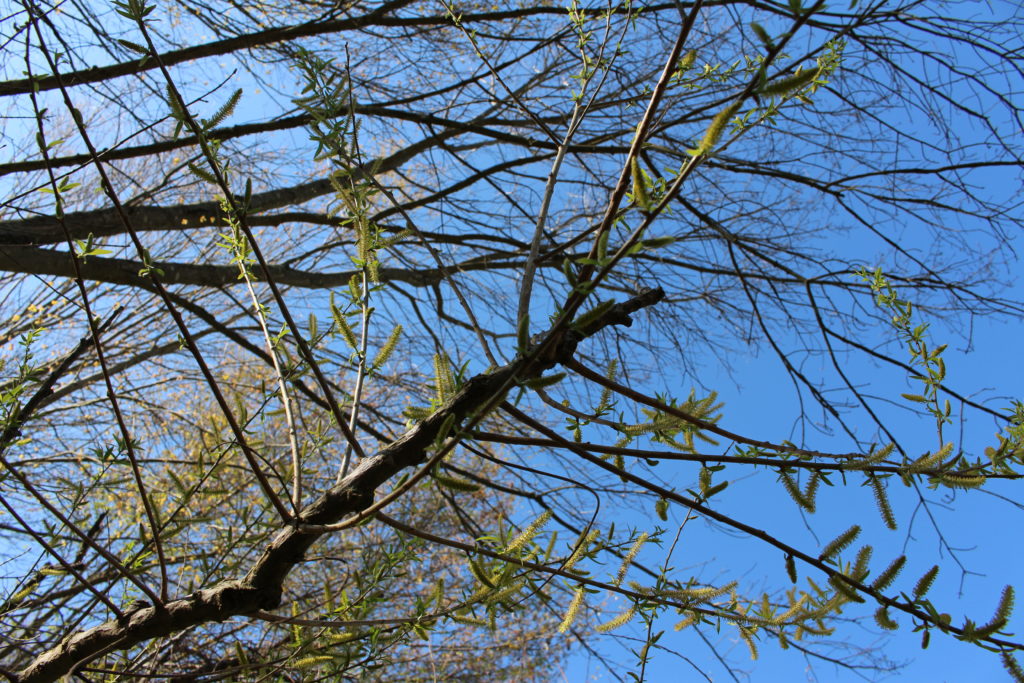
Black Willow
May 13, 2020
Black Willow (Salix nigra)
Black willow is a fast-growing tree that grows 30 to 60 feet tall. It is native to the eastern United States and Canada. It is the most common willow in Virginia, and flowers across the state in early spring.
Like many other willow species black willows have narrow, lance-shaped, alternately arranged leaves with small teeth along their edges. They are named for their dark brown to black bark that develops deep furrows and scales as the tree ages.
Black willows are adapted to moist to wet soils and grow along streams, ponds, and marshes. Their shallow, fibrous roots and water tolerance make black willows good soil-binders that can be planted alongside streams to prevent erosion.
Their tiny, inconspicuous yellow-green flowers are borne in catkins that are 0.5 to 3.5 inches long with male and female flowers on separate trees.
Though black willows are easily damaged by storms and have shallow roots that can clog pipelines, they can make good shade trees and are excellent for waterside erosion control. They are available from some nurseries as seedlings and can be easily propagated through branch cuttings.
Benefits to Biodiversity | The sweet smelling flowers are important to native bees and honeybees, as they provide nectar and pollen early in the year at a critical time when there are fewer other flowering plants providing pollen resources. Willows (Salix spp.) in general are host plants to at least 316 species of moth and butterfly caterpillars, including species such as the Great Leopard Moth (Hypercompe scribonia) and the Mourning Cloak butterfly (Nymphalis antiopa). Its twigs are browsed by deer and livestock, and its branches and shoots are eaten by beavers.



